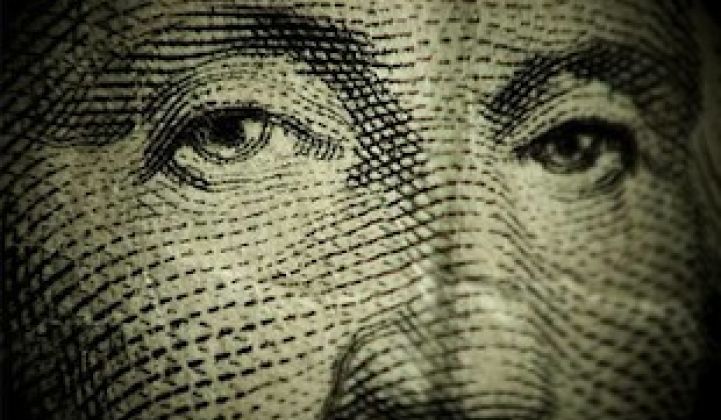Governor Andrew Cuomo just announced $165 million financing for New York State’s $1 billion Green Bank.
Once the initial funds are approved by the public service commission, the Green Bank will look for private sector financing to join the bank to fund clean energy projects. The Bank is expected to be open for business in early 2014.
Governor Cuomo said the money will be used “to build a more cost-effective, resilient and clean energy system in New York,” although the specifics of which projects will be able to take advantage of the Bank have yet to be determined. The money will go to technologies that are ready to be deployed, and could include everything from more efficient chillers and voltage control devices to solar PV and combined heat and power systems.
“As a public-private partnership, the Green Bank will implement a pioneering approach that strategically and efficiently uses limited state resources to drive investment into critical areas of the economy,” Cuomo said in a statement. “With this initiative, we will promote job growth and business development, improve resiliency and air quality, and lower costs for consumers while providing them with greater choices and value for their money.”
The $165 million is just the beginning, hopefully. The bank, which will be run by NYSERDA, will eventually reach a capitalization of $1 billion. The products will include credit enhancements, loan loss reserves and loan bundling to support securitization. The Green Bank can also help reduce transaction costs and standardize contracts.
Currently, New York state spends about $1.4 billion annually on clean energy, but about 80 percent of that is in the form of one-time subsidies and grants, which has been effective for getting specific projects done, but hasn’t helped in unlocking a functioning clean energy market. The total market for clean energy over the next ten years in New York is estimated at $85 billion, with 65 percent of that in energy efficiency and the rest in clean energy generation.
Most energy efficiency products have to piggy back on other agencies’ bond ratings because the banks don’t want to securitize the products because of a lack of history. The Environmental Defense Fund’s Investor Confidence Project is working on the issue, but in the meantime, regional green and infrastructure banks, such as those in Connecticut and Chicago, are trying to unlock capital by acting as intermediaries.
It’s not that the private sector doesn’t want to get into the energy efficiency market, where there billions of dollars are needed -- and there are billions in potential profit. “The private sector welcomes the Governor's Green Bank initiative,” Michael Eckhart, global head of environmental finance at Citigroup, said in a statement. “Governor Cuomo and Richard Kauffman are uniquely qualified to facilitate partnership between the private and public sectors, which is critical to achieving success. We look forward to working with the Green Bank to bring clean energy and green jobs to New Yorkers.”
The Green Bank in New York will repurpose existing energy funds, which will eventually be recycled as projects are launched and paid back. The bank is expected to be self-sustaining. In five years, the Green Bank is expected to double the amount of private capital it can pull in. Eventually, the long-term goal of the bank is to no longer need government support.
“By incorporating a financing model into the State’s clean energy support toolkit, the State will derive greater private sector leverage from scarce public funding than the current incentive model alone,” Richard Kauffman, Chairman of Energy and Finance for the State of New York, said in a statement. “The Green Bank is the next step in our strategy to unleash markets to provide economic growth and to help transform New York's energy system into one that is cleaner, more efficient and offers more value to customers."



